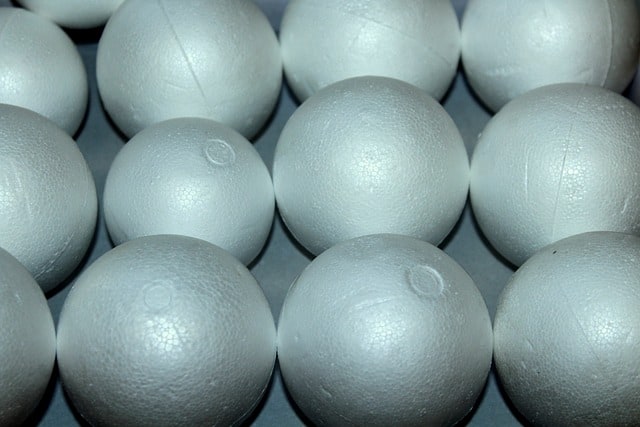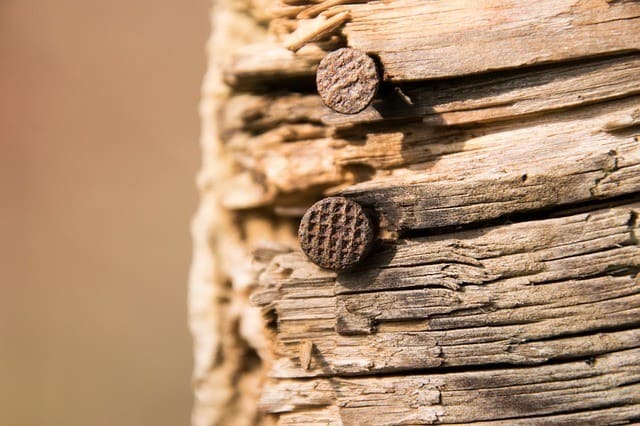Insulating a dog house is essential to keep out the cold and maintain your dog’s body temperature. Most people like to keep their dogs inside the house with them. Some prefer to build them a dog house so that their pooches have a place of their own. Just like people, dogs need their place to protect themselves from the chilly wind in the winter. A drastic variation in temperature is intolerable for most dogs.
They also need shelter when it is raining cats and dogs. Moreover, a shady place to protect them from the sun is also a must. A basic kennel does deflect rain and wind but it does nothing to hold in heat. Dog house insulation, along with dry and warm bedding, give your pampered pup the perfect interior to enjoy itself.
Igloo dog houses are naturally insulated by the hard foam with which they’re constructed. Raising the dog house onto a pallet or concrete blocks will further insulate the house and keep the cold from seeping in from the ground below. Bedding also provides insulation, and straw is the best choice.
Different Ways to Insulate Your Dog’s House
Note that a few of these options are pretty straightforward, while others are a bit more unusual and creative. We’ve tried to list the various options from the simplest to the most unusual.
It’s also important to point out that many of these insulating materials will need to be covered to prevent your dog from getting into physical contact with them.
The best way to do so is by cutting out wood or plastic panels which can then be installed on top of the insulating material. Alternatively, if your dog’s house has hollow walls, you can often stuff the insulating material inside this space.
Fiberglass insulation – the pink stuff you see in your attic – is a great option for your dog’s house.
It’s reasonably affordable and very easy to install; plus it’ll keep your dog’s house cozier than many of the other materials on this list.
And, unlike many other materials, you won’t need to use a table saw to cut it – a pair of heavy-duty scissors will suffice.
However, fiberglass insulation is pretty irritating to the skin (and lungs, if the fibers become airborne), so you’ll need to take precautions while you work with this material.
Additionally, you’ll want to keep the insulation sealed up in a way that prevents your dog from coming in contact with it. If your dog’s house features hollow walls, you can just stuff it inside.
If the walls of your dog’s house are solid, you’ll need to tack or staple the fiberglass fabric to the inside of the walls and then cover it with plastic or wood panels.
There are several types of reflective foil on the market, which will help reflect your dog’s body heat right back at him.
Reflective insulation products are likely the best option for many dog owners as they’re easy to install, relatively affordable, and highly effective.
In fact, these types of foils can be used in conjunction with most other types of insulation. For example, if you wanted to use fiberglass insulation and foil, you could begin by adhering the foil to the inside walls of your dog’s house, followed by a layer of fiberglass foam, and then wood or plastic panels to keep the fiberglass in place.
Because it is essentially nothing more than a bunch of tiny air pockets, bubble wrap can make a great insulator. It’s also easy to install and won’t require you to use any special tools.
Note that we’re not talking about the bubble wrap that is used to package the stuff you buy on Amazon (although that would also work if you don’t have anything else available). We’re talking about special bubble wrap that is coated in a thin layer of aluminum and designed specifically for insulating applications.
You could tack, staple, or glue the bubble wrap in place. Just be sure that you seal up the bubble wrap behind some wood or plastic panels to prevent your dog from chewing it up or otherwise damaging it.
Polystyrene foam – better known by the brand name Styrofoam – is one of the most obvious materials to use when trying to insulate your dog’s house.
After all, polystyrene foam is used in a variety of insulating products, ranging from coffee cups to drink coolers. It’s also pretty cheap, readily available, and easy to work with.

However, Styrofoam is not the most durable material around, and it won’t last long in your dog’s house if you leave it exposed (some dogs may even chew on it, which is certainly not ideal).
The best way to use Styrofoam to insulate your dog’s house is by cutting a series of foam panels that match the inside walls, ceiling, and floor of the house. Tack, staple, or glue the panels in place, and then cover each panel with a similar-sized piece of wood or durable plastic.
Foam sprays are pretty nifty products that will work really well for insulating your dog’s house. Admittedly, this will not be an especially affordable option for insulating large dog houses, but it may be cost effective for keeping small dog houses warm.
If you’re not sure why type to use, Great Stuff Insulating Foam Sealant is a good choice to start with.
You’ll want to start by cutting out a set of wood or plastic panels and attaching them to the inside of your dog’s house. You’ll need to leave a space in between the panels and the walls, as well as a few holes to spray the foam through.
If your dog’s house has hollow walls, you can forego making the panels and just fill the internal cavity with the foam. Just be sure to plan before you spray, as the foam will start expanding immediately.
Carpet is another viable option for insulating your dog’s house.
It isn’t going to transform your dog’s house into a sauna, but it will help cut the winter chill a little bit – especially if you use some on the ground as well as the walls and ceiling.
Carpet isn’t extraordinarily cheap, but you won’t need much to cover the inside of your dog’s house. You may even be able to obtain discounted carpet from a local supplier if you are willing to use whatever color or pattern they have laying around, and you don’t mind working with odd sizes and pieces.
It’s probably wisest to use an outdoor carpet for the sake of durability, but long-fibered indoor carpets will trap more air, and therefore provide more warmth for your pet.
Stapling the carpet into place is probably the best way to install it, but you may be able to adhere lightweight carpets to the walls with a strong glue or adhesive.
By itself, wood isn’t a fantastic insulator, but it is better than nothing, and it is pretty easy to install a set of wood panels in your dog’s house.
Additionally, if you maintain a small air gap between the dog house walls and the wooden panels you install, it’ll help provide additional insulating value.

To install the walls, just measure the interior dimensions of the doghouse and cut a panel for each of the three walls, as well as the roof and floor. Just be sure that you apply a high-quality water sealant to the wood before installing it. This will not only help the wood last longer, but it’ll also improve the insulating properties of the wood too.
The best woods to use in this application are soft woods, as they typically contain more small air pockets than hardwoods. So, look for pine or cedar lumber when using wood to insulate your dog’s house.
This is admittedly an odd recommendation, but water is actually a very effective insulator.
It takes a lot of energy to warm water up, but once you do, it stays warm much longer than a similar quantity of air does. Water is also safe and essentially free, so it is definitely an attractive option to consider. However, because it is a liquid, it’s a bit tricky to use.
The best solution is probably to use a bunch of small water bottles and then use wood or plastic panels to keep the water bottles in place. You’ll have to use a bit of ingenuity when arranging the bottles, and you’ll want to ensure the cover panels fit snuggly to keep the bottles from shifting.
The water may freeze in really cold weather, but ice is also a pretty decent insulator, and you’ll want to bring your dog indoors in sub-freezing temperatures anyway. It’s also a good idea to empty a little of the water from each bottle before you install them, which will reduce the chances that they’ll burst if the water freezes.

Don’t Forget About the Cold Ground!
Insulating the walls and ceiling of your dog’s house is important, but it is also important to insulate your pooch from the cold ground below. This is typically easier than insulating the walls, and there are plenty of things you can use for this purpose.
Some of the best things to cover the floor of your dog’s house with include:
We’ve written an entire guide for selecting good dog house bedding before, so give it a read when you’re considering the best bedding options for your pup.
Does an igloo keep a dog warm?
Igloo dog houses share in these similarities in that they are designed to keep dogs warm in winter weather. Their rounded dome shape and elongated tunnel entrance allows a dog to stay warm utilizing its own body heat.
Most likely, yes they do, and veterinarians advise pet owners to provide extra warmth through clothes, heating or blankets. Especially smaller dogs, regardless of coat thickness, will have a harder time keeping themselves warm. If you feel cold, your dog is likely to be cold as well.
FAQ
How do you insulate a plastic dog house for winter?
Basic insulation will help keep your dog’s home much warmer. Foil-backed foam boards are probably the best choice for your dog’s house, as they are easy to install and very effective.
Should a dog house be insulated?